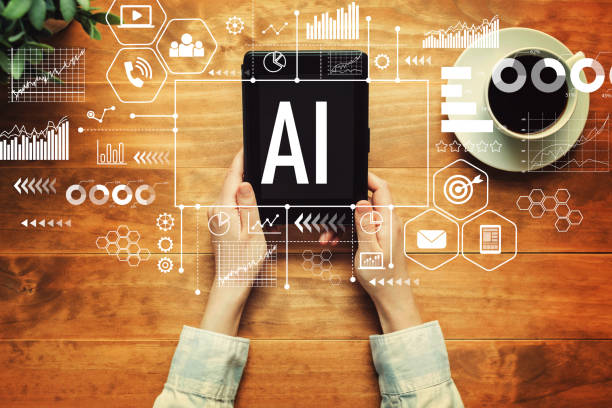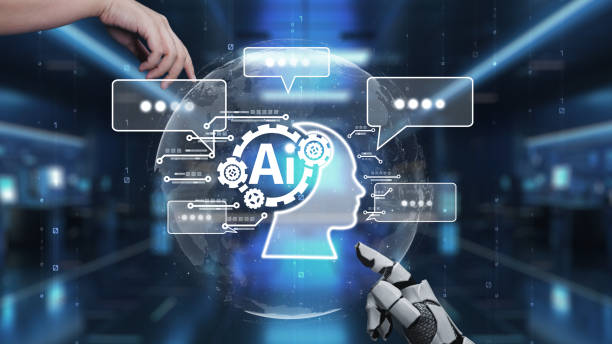What is Artificial Intelligence? Definition and Key Concepts
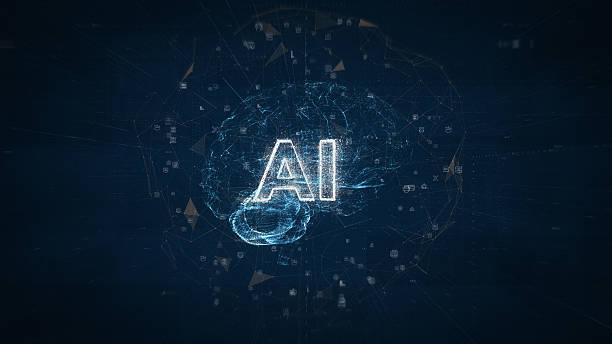
Artificial Intelligence or AI, is a branch of computer science that deals with building machines that are capable of performing tasks that usually require human intelligence.
These tasks include learning, problem-solving, decision-making, understanding natural language, and pattern recognition.
#ArtificialIntelligence seeks to create systems that can perform complex tasks automatically and without the need for direct human intervention.
Key concepts in this field include machine learning, neural networks, natural language processing (NLP), and computer vision.
This technology is rapidly advancing and is used in various fields including medicine, finance, transportation, and manufacturing.
Artificial Intelligence is a broad field that includes numerous sub-branches.
Each sub-branch focuses on a specific aspect of human intelligence and tries to simulate it in machines.
For example, machine learning allows machines to learn from data and improve their performance without explicit programming.
Neural networks, inspired by the structure of the human brain, are used to solve complex problems such as image and sound recognition.
Ultimately, the goal of Artificial Intelligence is to create machines that are not only capable of performing specific tasks, but can also think, reason, and learn in general.
This ambitious goal requires significant advances in various fields of computer science and artificial intelligence.
Are visitors to your online store leaving before making a purchase? Worry no more! With Rasaweb’s professional online store website design services, solve the problem of not converting visitors into customers forever!
✅ Significant increase in conversion and sales rates
✅ Unique and attractive user experience
⚡ Contact us now for a free consultation!
History of Artificial Intelligence: From Beginning to Today

The history of Artificial Intelligence dates back to the 1950s, when researchers began exploring the possibility of building machines that could think like humans.
The Dartmouth Conference in 1956 is considered a turning point in the history of Artificial Intelligence, where the term “artificial intelligence” was first used.
In the early decades, significant advances were made in areas such as problem-solving and computer games.
However, in the 1970s and 1980s, due to hardware limitations and lack of data, the progress of Artificial Intelligence slowed down.
This period is known as the “AI winter.”
In the 1990s, with the increase in computer processing power and access to more data, Artificial Intelligence revived.
New algorithms such as deep neural networks were developed and new applications were found in areas such as facial recognition and machine translation.
Today, Artificial Intelligence has become one of the fastest-growing and most widely used technologies in the world.
From voice assistants like Siri and Alexa to self-driving cars and recommendation systems, Artificial Intelligence is present in our daily lives.
With continued advances in this field, it is expected that Artificial Intelligence will play an even more important role in the future.
Types of Artificial Intelligence: From Simple Systems to General Intelligence

Artificial Intelligence can be divided into different types, including Narrow AI, General AI, and Super AI.
Narrow AI, which is currently the most common type of Artificial Intelligence, is designed to perform specific tasks.
For example, a facial recognition system or a product recommendation system are examples of Narrow AI.
General AI, which is the ultimate goal of many AI researchers, refers to machines that can perform any task that a human can.
This type of Artificial Intelligence is still in the early stages of development and faces many technical and ethical challenges.
Super AI, which goes beyond human cognitive abilities, is the subject of much debate among scientists and philosophers.
Each of these types of Artificial Intelligence requires different approaches and technologies.
Narrow AI typically uses machine learning algorithms and big data for training, while General AI requires significant advances in areas such as reasoning, planning, and natural language understanding.
| Type of Artificial Intelligence | Description | Example |
|---|---|---|
| Narrow AI | Designed to perform specific tasks | Facial recognition system |
| General AI | Capable of performing any task that a human can | Still under development |
| Super AI | Beyond human cognitive abilities | Subject of discussion and investigation |
Applications of Artificial Intelligence in Various Industries
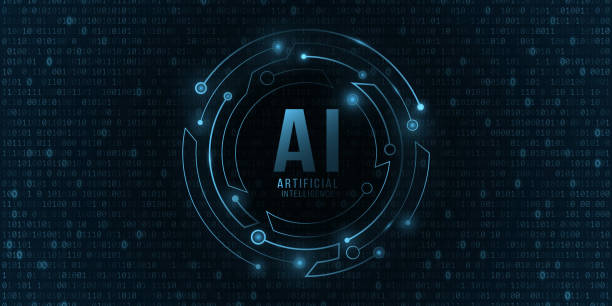
Artificial Intelligence is transforming various industries.
In healthcare, Artificial Intelligence is used for disease diagnosis, drug development, and providing personalized care.
In the financial industry, Artificial Intelligence is used for fraud detection, risk management, and providing automated financial services.
In transportation, self-driving cars and intelligent traffic management systems are examples of Artificial Intelligence applications.
In addition, Artificial Intelligence is used in the manufacturing industry to improve productivity, reduce costs, and increase product quality.
In the customer service area, chatbots and virtual assistants help customers quickly and effectively get answers to their questions.
In the field of education, Artificial Intelligence can help provide personalized training and assess student performance.
With the expansion of Artificial Intelligence applications, this technology is expected to play a more important role in the global economy and create new opportunities for innovation and growth.
Are you dissatisfied with the low rate of converting visitors into customers on your online store site?
Solve this problem forever with professional online store website design by Rasaweb!
✅ Increase the rate of converting visitors into customers
✅ Create an excellent user experience and gain customer trust
⚡ Get free consultation
Machine Learning: The Driving Force of Artificial Intelligence
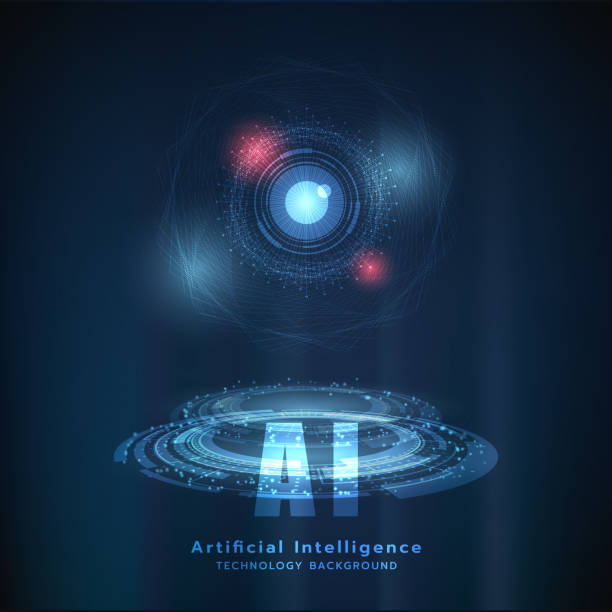
Machine Learning is one of the most important sub-branches of Artificial Intelligence that allows machines to learn from data and improve their performance without explicit programming.
Machine learning algorithms analyze data, identify hidden patterns and relationships, and use this information to make predictions or decisions.
There are different types of machine learning algorithms, including Supervised Learning, Unsupervised Learning, and Reinforcement Learning.
In supervised learning, the machine is trained using labeled data, while in unsupervised learning, the machine must identify patterns in the data without any labels.
Reinforcement learning, which is used in games and robotics, allows the machine to learn by interacting with the environment and receiving feedback.
Machine learning is currently used in many AI applications including image recognition, natural language processing, and product recommendations.
With the increasing volume of data and the advancement of algorithms, machine learning is expected to play a more important role in the future of Artificial Intelligence.
Neural Networks: Inspired by the Human Brain

Neural Networks are computational models that are inspired by the structure of the human brain.
A neural network consists of a large number of processing units called neurons, which are organized into different layers.
Each neuron receives an input signal, processes it, and produces an output signal.
Neural networks are very effective in solving complex problems such as image recognition, natural language processing, and time series forecasting.
Deep Neural Networks, which consist of a large number of layers, have been particularly successful in recent years.
These networks can learn complex patterns in data and perform very well in various tasks.
However, neural networks require a lot of data for training and it may be difficult to interpret their performance.
In addition, training neural networks can be time-consuming and costly.
Despite these challenges, neural networks are considered one of the most powerful tools of Artificial Intelligence and are currently used in many applications.
Natural Language Processing: Understanding and Generating Human Language
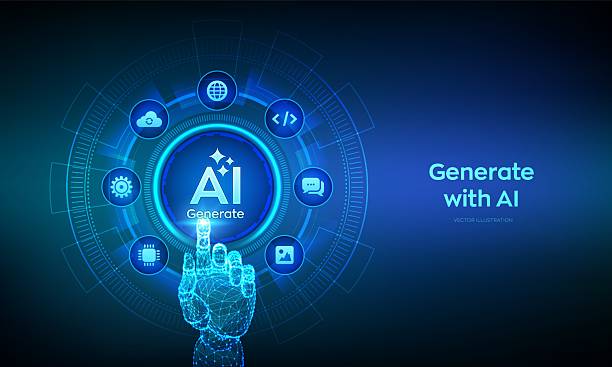
Natural Language Processing (NLP) is a branch of Artificial Intelligence that enables machines to understand and generate human language.
NLP includes a set of techniques and algorithms that help machines analyze text, extract its meaning, and generate appropriate responses.
NLP is used in various applications including machine translation, chatbots, sentiment analysis, and text summarization.
With recent advances in areas such as deep learning and large language models, NLP is rapidly advancing and new applications are emerging.
For example, large language models like GPT-3 can generate texts that are difficult to distinguish from human writings.
However, NLP still faces many challenges.
Understanding human language is very complex and requires a lot of knowledge about the world, culture, and language.
In addition, human language is often ambiguous and multifaceted, which can be problematic for machines.
Despite these challenges, NLP is considered one of the most important and widely used fields of Artificial Intelligence.
| Application of Natural Language Processing | Description | Example |
|---|---|---|
| Machine Translation | Translating text from one language to another | Google Translate |
| Chatbots | Providing automated answers to user questions | Customer support |
| Sentiment Analysis | Determining the emotions and opinions in the text | Analyzing customer feedback |
Computer Vision: The Ability to See for Machines
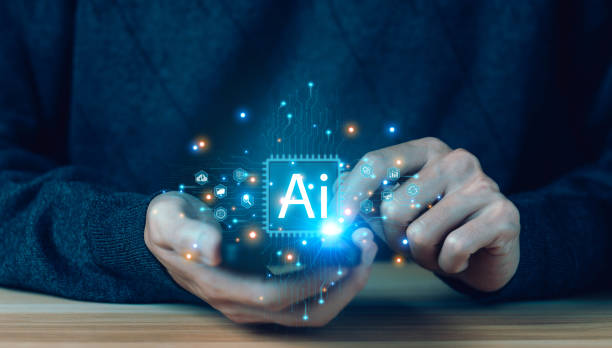
Computer Vision is a branch of Artificial Intelligence that enables machines to understand and interpret images and videos.
Computer vision includes a set of techniques and algorithms that help machines recognize objects, understand scenes, and track movements.
Computer vision is used in various applications including self-driving cars, facial recognition, robotics, and security.
With recent advances in areas such as deep learning and convolutional neural networks, computer vision is rapidly advancing and new applications are emerging.
For example, facial recognition systems can accurately identify individuals and are used in security and access control systems.
However, computer vision still faces many challenges.
Understanding images and videos requires a lot of knowledge about the world, physics, and geometry.
In addition, images and videos often have noise, ambiguity, and lighting changes, which can be problematic for machines.
Despite these challenges, computer vision is considered one of the most important and widely used fields of Artificial Intelligence.
Does your company’s website create a professional and lasting first impression on potential customers? Rasaweb, with professional corporate website design, not only represents the credibility of your brand, but also opens a path for the growth of your business.
✅ Create a powerful and reliable brand image
✅ Attract target customers and increase sales
⚡ Get free consultation
Ethical Challenges and Concerns of Artificial Intelligence
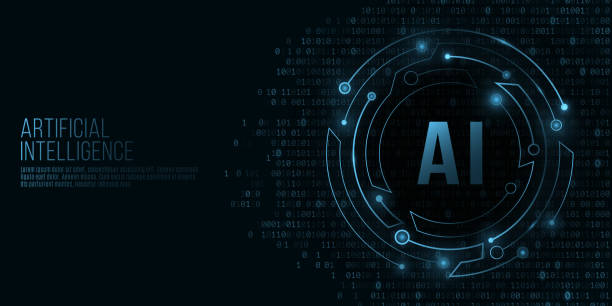
With the expansion of Artificial Intelligence applications, numerous ethical challenges and concerns have also been raised.
One of the most important of these concerns is bias in AI algorithms.
If the data used to train the algorithms is biased, the algorithms may also make biased decisions.
This can lead to discrimination in hiring, lending, and other areas.
Another concern is job loss due to automation.
With the advancement of Artificial Intelligence, many of the tasks that were previously performed by humans can now be performed by machines.
This can lead to widespread unemployment and economic inequality.
In addition, there are concerns about privacy, security, and control of Artificial Intelligence.
To address these challenges, it is necessary for policymakers, researchers, and AI developers to work together to develop appropriate ethical and legal frameworks.
These frameworks should protect human rights and values and ensure that Artificial Intelligence is used for the benefit of society.
The Future of Artificial Intelligence: What to Expect
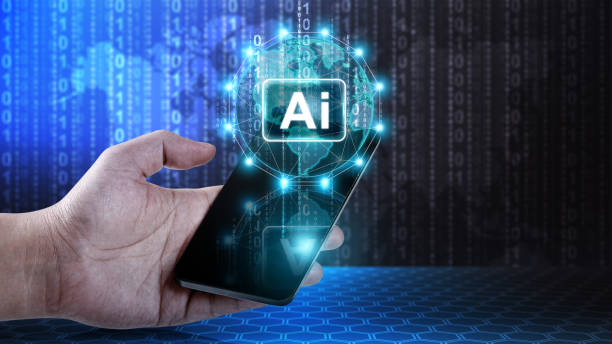
The future of Artificial Intelligence is bright and full of potential.
With continued advances in areas such as machine learning, neural networks, and natural language processing, Artificial Intelligence is expected to play an even more important role in our daily lives.
In the future, we may see fully autonomous cars, smarter personal assistants, and more accurate medical systems.
In addition, Artificial Intelligence can help solve some of the world’s biggest challenges, including climate change, incurable diseases, and poverty.
However, it is necessary to pay attention to the challenges and ethical concerns of Artificial Intelligence and ensure that this technology is used for the benefit of society.
Ultimately, the future of Artificial Intelligence depends on the decisions we make today.
By developing and using Artificial Intelligence responsibly, we can create a brighter and more just future for all.
FAQ
| Question | Answer |
|---|---|
| What is the definition of Artificial Intelligence (AI)? | It is a field in computer science that aims to create intelligent machines that can think, learn, solve problems, and make decisions like humans. |
| Mention some common applications of artificial intelligence. | Includes self-driving cars, voice assistants (such as Siri and Alexa), recommendation systems (such as Netflix and Amazon), facial recognition, and medical diagnosis. |
| What is the difference between Narrow Artificial Intelligence (ANI) and General Artificial Intelligence (AGI)? | Narrow AI specializes in one specific task, while General AI possesses human intellectual capacity to perform any cognitive task. |
| What is Machine Learning and its relationship to Artificial Intelligence? | Machine learning is a branch of artificial intelligence that focuses on developing algorithms that allow systems to learn from data without explicit programming. |
| What are Artificial Neural Networks? | They are computational models inspired by the structure and function of the human brain and are used in deep learning to process data and discover complex patterns. |
| Mention some ethical challenges related to artificial intelligence. | Includes privacy issues, bias in data and algorithms, job loss, and accountability in case of errors or unfair decisions. |
| What is Natural Language Processing (NLP)? | It is a branch of artificial intelligence that focuses on enabling computers to understand, interpret, and create human language in a meaningful and interactive way. |
| How can artificial intelligence affect the labor market? | It can lead to the automation of some routine tasks, which requires retraining workers and creating new jobs in the fields of designing, developing, and maintaining AI systems. |
| What is Computer Vision? | It is a field in artificial intelligence that enables computers to “see” and understand and interpret images and videos in the same way humans do, enabling them to recognize objects and faces. |
| What is the importance of data in developing artificial intelligence systems? | Data is the fuel that powers artificial intelligence systems, especially in machine learning. The quality and quantity of data greatly affect the accuracy and performance of models and their ability to learn and make correct decisions. |
And other services of Rasa Web advertising agency in the field of advertising
Intelligent Sales Automation: Transform online growth with dedicated programming.
Intelligent Link Building: A professional solution to increase website visits with a focus on customizing the user experience.
Intelligent Brand Identity: An effective tool for analyzing customer behavior with the help of intelligent data analysis.
Intelligent Advertising Campaign: A new service to increase customer acquisition through marketing automation.
Intelligent Website Development: A professional solution to attract customers with a focus on using real data.
And more than hundreds of other services in the field of internet advertising, advertising consulting and organizational solutions
Internet Advertising | Advertising Strategy | Advertorial
Resources
Application of Artificial Intelligence in Iran
,What is Artificial Intelligence?
,The Future of Artificial Intelligence in Iran
,What is Artificial Intelligence and What are its Applications?
? Are you ready to take your business to the top in the digital world? Rasa Web Digital Marketing Agency, with years of experience and a specialized team, provides comprehensive and result-oriented solutions for the growth and visibility of your brand. From responsive website design and SEO to social media management and targeted advertising campaigns, we are with you every step of the way to turn your digital dreams into reality. With Rasa Web, the bright future of your business starts today.
📍 Tehran, Mirdamad Street, next to the Central Bank, Southern Kazerun Alley, Ramin Alley No. 6
“`

